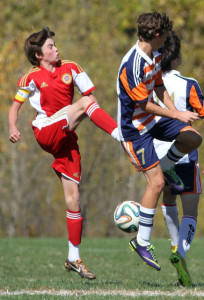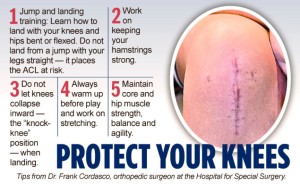 Our Personal Torn ACL Experience
Our Personal Torn ACL Experience
Our 15 year old son has been a soccer player since the day he was born. He literally began dribbling and passing soccer balls as soon as he could stand up. He has always loved the sport and has worked hard to be the best player he could be. He realized his first big goal when his competitive team made it to the Nationals (Go Monaco)! What a memorable trip and feeling of accomplishment that was. Next on his radar was to prepare himself to make the Varsity team of his high school as a freshman. A lofty goal considering the team he was trying out for has 16 State titles. He worked out 2 hours a day on his own in off seasons to be prepared. He caught the head coaches attention during a summer league and was invited to play with the varsity team during a pre-season tournament. He was thrilled and when tryouts came, he gave it all he had and gained a position as a striker on the Varsity squad.
We were excited to see him play in a 4 game pre-season tournament with his new team. Things were going better than expected when he got his first team goal just 20 minutes into the first game! Then everything changes in an instant on just one play. He’s challenging an opponent that outweighs him by a good 30 pounds for the ball and they are both crashing towards the ball. Our son plants his feet to shoulder the 6’4″ senior, convinced he should have ball possession. Instead he hears a popping noise and crumples to the ground unable to stand up. This one moment changes his “top of the world, made varsity bliss” to the start of a devastating series of appointments, surgery and now facing a full 6 months off the field with grueling physical therapy ahead to get back to the game he loves so much. Related Blog: (Torn ACL in Young Athletes is becoming Epidemic)
Most training programs are based on old school beliefs that quadriceps and hamstring exercises were the main factors in preventing ACL tears. The need for movement retraining, hip strengthening AND strengthening the quads and hamstrings is the key. Not only does the athlete need to move correctly, but they need to activate the correct muscles for proper form. When a soccer player plants and cuts, the hip muscles activate at the exact moment in time when a change of direction occurs. This is safely achieved by the combination of strength and movement at the exact same time. Strength training alone is not sufficient. Even if an athlete performs an adequate amount of hip strengthening exercises, knee valgus can still occur due to the lack of hip muscle activation during this movement, when needed the most. (See more here about knee valgus (inward movement of knees) and the theory of its contribution to ACL tears.)
Resources for Torn ACL and ACL Prevention/Education
The ACL Solution: Prevention and Recovery by Dr Robert Marx, Orthopedic Surgeon
ACL injuries – Information on ACL injuries on the AAP’s HealthyChildren.org website.


